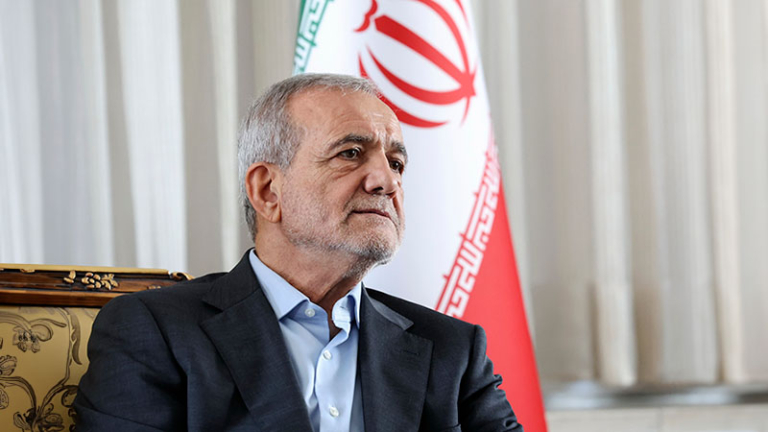A Path to Stability: Achieving Strategic Goals in Iran Without Total Collapse
A middle-ground strategy for Iran could achieve U.S. goals without triggering an Iraq-style collapse—a nightmare scenario that’d leave America footing the bill. Here’s how it could work: 1/
— Paramendra Kumar Bhagat (@paramendra) June 19, 2025
A Path to Stability: Achieving Strategic Goals in Iran Without Total Collapse https://t.co/rt6vPHp6if
— Paramendra Kumar Bhagat (@paramendra) June 19, 2025
The Issues With Calling for a Regime Change in Iran ....... Iran is not Syria, Libya, or Iraq. If President Trump joins the war on Iran and commits the United States to removing the Iranian regime, the results will likely be more catastrophic than the 2003 war on Iraq, which killed more than 1.2 million people, displaced more than nine million Iraqis, contributed to the emergence of the Islamic State, and cost the United States about $3 trillion. America’s wars in Iraq and Afghanistan also contributed significantly to the squandering of its unipolar moment and setting off the decline of the American century. .......... American analysts often underestimate the strength of the Iranian state, which is structured for survival. The Iranian military has a dual architecture designed to resist coups and invasions: Artesh, the regular armed forces of around 420,000 men across ground, naval, air, and air-defense forces, and the Islamic Revolutionary Guard Corps (IRGC), an elite, ideologically driven military with roughly 190,000 personnel across ground, naval, and air branches. Beyond them is the Basij, a vast paramilitary network with hundreds of thousands of members embedded in every corner of Iranian society—in the streets, in neighborhoods, in schools, and mosques. They aren’t just loyalists of Ayatollah but woven into a deeper idea of the state and committed to the independence of Iran. .......... Despite Israel’s extensive and quite successful campaign of assassinations targeting senior IRGC commanders, the core of this group has not been hollowed out but hardened. A younger generation of more ideologically rigid commanders has emerged. They came of age in a regional military power, see themselves as the stewards of an embattled regional order, and push for more aggressive postures toward the United States and Israel—stances their more pragmatic predecessors, shaped by the war with Iraq, often resisted. This new generation of Iranian military commanders has also been battle-hardened in close-quarter conflict in Syria and understand how wars of state collapse can unfold. .......... If this war morphs into a war of state collapse—and it very well might—then what comes next will likely not be surrender. The Revolutionary Guards’ Quds Force, which helped organize a patchwork of militias that bled American forces in Iraq for years, is well-positioned to do the same again. These networks—Lebanese, Iraqi, Syrian, Afghan—were built precisely to extend deterrence and sow instability in the event of direct conflict. Israel has deeply weakened Iran’s axis of non-state actors in the region, but Tehran retains the ability to foment militias to fight against American and Israeli troops and interests. ....... ....... Bombing campaigns could significantly destroy military and civilian infrastructure in Iran but to replace the Iranian regime, President Trump has to be prepared to fight not just a standing army but a system with decades of experience in asymmetric warfare. ......... Iran is not governed by a single man or clique that can be decapitated. The Iranian state is a competitive authoritarian system with institutions that have evolved over a century. Even amid crises, the system generates new leaders, factions, and power centers. Even the deaths of some influential figures would not bring the system down—it would renew it.......... Saddam owned the skies. He wielded nerve gas. He had Western and Soviet support. Still, Iran did not fall. ........ The war with Iraq scarred Iran, however it taught the country that survival does not require parity but endurance. In the decades since, the Iranian state has reorganized itself not for peace, but for siege. Its military doctrine is not built for conquest but for resistance. Iran won’t simply absorb aerial bombardment or shrug off sabotage. .......... Iran is a civilizational state. The identity binding many Iranians is not limited to a flag or a government but rooted in a deeper historical memory stretching back through empire, invasion, forced partitions, foreign coups, and colonial interludes. To be sure, the Islamic Republic has inflicted great suffering upon the Iranian people and enraged many Iranian protestors, but to mistake that rage for a longing to be “liberated” by foreign forces is to repeat the catastrophic delusions that defined the Iraq war in 2003. .......... Iran is four and a half times the size of Germany, with 92 million people. There are millions of Iranians who want an end to the Islamic Republic, but there are also millions who would fight any foreign attempt to decide what replaces it. ......... many in Iran’s security establishment are likely to believe that only nuclear deterrence can ensure regime survival. The lesson they are likely to draw from the past two decades is that surrender does not lead to safety. Saddam gave up his weapons. He was invaded. Gaddafi gave up his nuclear program. He was overthrown. ........... The irony is that the most ardent proponents of regime change in Iran may be accelerating the very nuclear program they claim to fear.

No comments:
Post a Comment